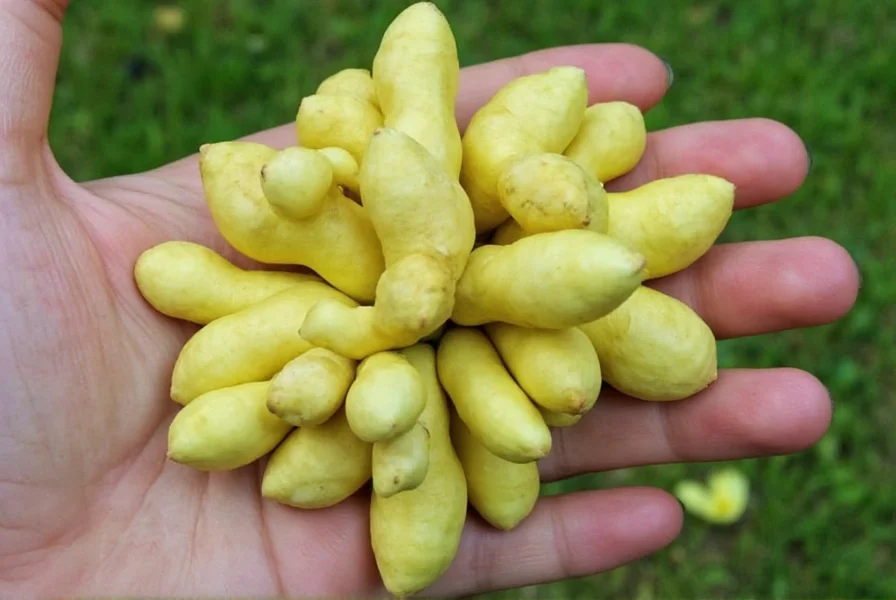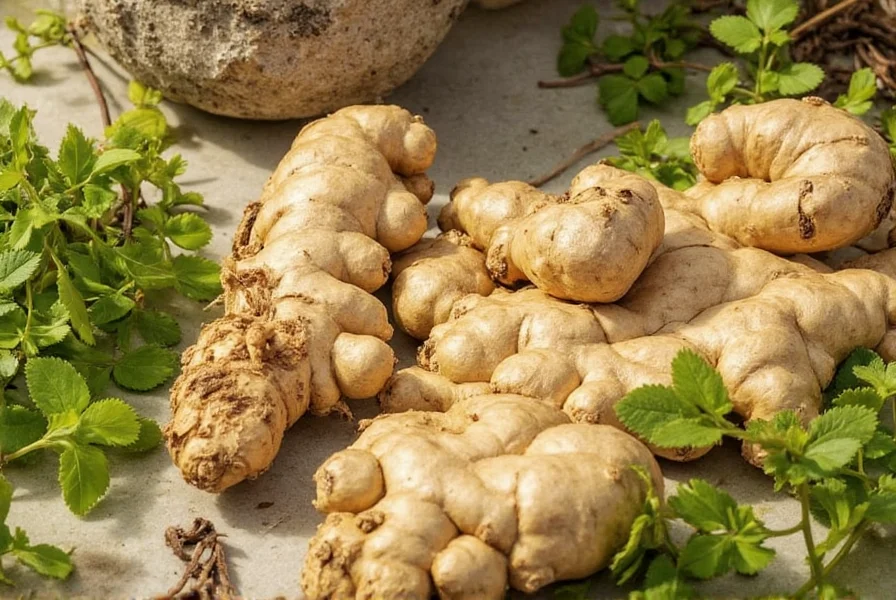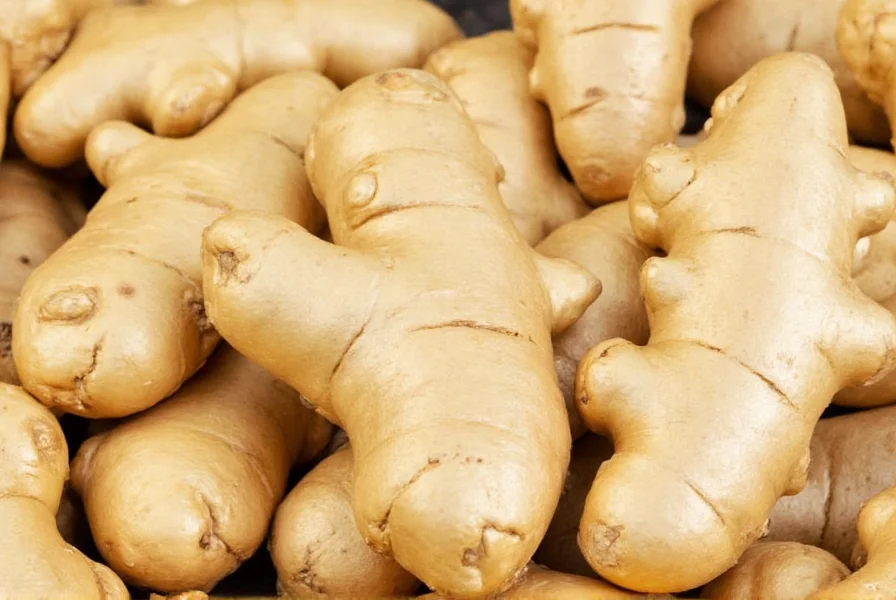Planting ginger successfully requires understanding its tropical origins and specific environmental needs. This versatile rhizome, scientifically known as Zingiber officinale, thrives in conditions that mimic its native Southeast Asian habitat. Whether you're growing ginger for culinary use, medicinal purposes, or simply as an interesting garden addition, selecting the right planting location is crucial for a bountiful harvest.
Optimal Climate Conditions for Ginger Cultivation
Ginger flourishes in warm, humid environments with temperatures between 71-86°F (22-30°C). It cannot tolerate frost, making it challenging to grow in temperate climates without proper protection. In USDA hardiness zones 9-12, ginger can be grown outdoors year-round, while gardeners in cooler zones (below 8) should consider container gardening that can be moved indoors during colder months.
The ideal humidity level for ginger cultivation ranges from 70-90%. In drier climates, regular misting or strategic planting near water features can help maintain necessary moisture levels. Ginger requires a growing season of 8-10 months to reach full maturity, though you can harvest "green ginger" after 4-6 months for a more tender product.
Soil Requirements and Preparation Techniques
The best soil for planting ginger is loose, well-draining, and rich in organic matter. Heavy clay soils should be amended with compost, aged manure, or coconut coir to improve drainage and structure. Sandy soils benefit from added organic matter to increase water retention.
| Soil Characteristic | Optimal Range | Adjustment Methods |
|---|---|---|
| pH Level | 5.5-6.5 (slightly acidic) | Add sulfur to lower pH; lime to raise pH |
| Organic Matter | 20-30% | Mix in compost, leaf mold, or well-rotted manure |
| Drainage | Excellent | Add perlite, sand, or build raised beds |
Before planting, prepare the soil by working in 2-4 inches of compost to a depth of 12-15 inches. Avoid fresh manure, which can cause rhizomes to rot. A balanced organic fertilizer with higher potassium content can be incorporated to support root development.

Sunlight Requirements for Healthy Ginger Growth
While ginger originates from forest understories, its sunlight needs vary by climate. In tropical regions with intense sun, ginger performs best in partial shade (2-5 hours of morning sun). In cooler climates with less intense sunlight, ginger can tolerate more direct sun (4-6 hours).
Direct afternoon sun in hot climates can scorch ginger leaves and stress the plants. Consider planting ginger beneath taller crops like bananas or fruit trees that provide dappled shade. In container gardening, position pots where they receive morning sun but are protected from harsh afternoon rays.
Container vs. Ground Planting Options
Container gardening offers significant advantages for ginger cultivation, especially in non-tropical climates:
- Portability: Containers allow you to move plants indoors when temperatures drop below 50°F (10°C)
- Soil control: You can create the perfect soil mix without amending garden beds
- Drainage management: Containers prevent waterlogging, which is critical for ginger's health
- Space efficiency: Ideal for urban gardeners with limited space
When selecting containers, choose pots at least 12 inches deep with adequate drainage holes. Fabric grow bags work exceptionally well for ginger as they provide excellent aeration and prevent overwatering. For ground planting, raised beds 6-12 inches high improve drainage in areas with heavy rainfall.
Seasonal Timing for Planting Ginger
The best time to plant ginger depends on your climate zone:
- Tropical regions: Plant at the beginning of the rainy season (typically spring)
- Subtropical regions: Plant in late winter to early spring after soil temperatures reach 70°F (21°C)
- Temperate regions: Start indoors 4-6 weeks before last frost, then transplant outdoors when soil warms
Ginger rhizomes should be planted with the eye buds facing upward, at a depth of 2-4 inches. Space individual pieces 8-12 inches apart to allow room for rhizome expansion. Water thoroughly after planting, but avoid overwatering until sprouts appear (typically 2-4 weeks).
Regional Considerations for Different Climates
Gardeners in various regions face unique challenges when planting ginger:
- Hot, arid climates: Focus on maintaining consistent moisture and providing ample shade. Mulch heavily to retain soil moisture.
- Cooler climates: Use black plastic mulch to warm the soil or grow in containers that can be moved indoors.
- High-rainfall areas: Prioritize drainage with raised beds or containers to prevent rhizome rot.
- Humid subtropical zones: Monitor for fungal diseases and ensure good air circulation around plants.
In regions with distinct seasons, ginger can be grown as an annual crop. Start indoors in late winter, transplant outdoors after the last frost, and harvest before the first fall frost. In USDA zones 7 and below, ginger must be grown in containers that can be brought indoors for winter.
Common Mistakes to Avoid When Planting Ginger
Many gardeners encounter problems when planting ginger due to these common errors:
- Planting too deep: Burying rhizomes deeper than 4 inches can delay sprouting and reduce yield
- Overwatering: Saturated soil leads to rhizome rot, especially in cool conditions
- Insufficient warmth: Planting in cold soil (below 60°F/15°C) causes dormancy or rot
- Poor drainage: Heavy clay soils without amendment cause waterlogging
- Excessive sun exposure: Direct afternoon sun in hot climates burns leaves and stresses plants
Remember that ginger grows slowly at first, with visible sprouts taking 2-4 weeks to appear. Patience is key—don't assume your planting failed if you don't see immediate growth.

Harvesting and Storage Tips
For mature ginger, wait 8-10 months after planting when the leaves begin to yellow and die back. For "green ginger" with thinner skin and milder flavor, harvest after 4-6 months. To harvest, carefully dig around the plant and lift the entire rhizome cluster.
After harvesting, cure ginger by air-drying for 2-3 days in a shaded, well-ventilated area. Store in a cool, dark place with moderate humidity (like a root cellar) for several weeks. For longer storage, freeze peeled ginger or preserve it in vinegar.
Can I plant store-bought ginger?
Yes, you can plant store-bought ginger, but organic ginger works best as conventional ginger may be treated with growth inhibitors. Choose plump rhizomes with visible eye buds, soak in water overnight to remove potential sprout inhibitors, then plant with eyes facing up in well-draining soil.
How much space does ginger need to grow properly?
Ginger rhizomes should be spaced 8-12 inches apart in all directions to allow proper development. Each planting piece needs approximately 1 square foot of growing space. When growing in containers, use pots at least 12 inches deep and wide for a single rhizome piece.
What's the best time of year to plant ginger in tropical climates?
In tropical climates, the best time to plant ginger is at the beginning of the rainy season, typically in spring. This timing provides consistent moisture during the critical establishment phase while avoiding the risk of rhizome rot from excessive water during the peak rainy months.
Can ginger be grown indoors year-round?
Yes, ginger can be successfully grown indoors year-round in containers. Place in a location with bright, indirect light (east-facing windows are ideal), maintain temperatures between 71-86°F (22-30°C), and keep soil consistently moist but not waterlogged. Indoor ginger may grow more slowly but can still produce harvestable rhizomes in 8-10 months.
How do I know when my ginger is ready to harvest?
Mature ginger is ready to harvest when the leaves turn yellow and begin to die back, typically 8-10 months after planting. For younger "green ginger," harvest after 4-6 months when the leaves are still green but the rhizomes have reached usable size. Gently dig around one plant to check rhizome size without disturbing the entire crop.
Final Thoughts on Ginger Planting Locations
Selecting the right location for planting ginger combines understanding your local climate with creating micro-environments that meet ginger's specific needs. Whether you're gardening in a tropical paradise or a temperate backyard, careful attention to soil preparation, sunlight exposure, and moisture management will reward you with healthy ginger plants. Remember that ginger's growth is slow initially but accelerates as the weather warms, so patience and consistent care are essential for a successful harvest.











 浙公网安备
33010002000092号
浙公网安备
33010002000092号 浙B2-20120091-4
浙B2-20120091-4